Comprehensive History of Slot Machines – The Reel Archaeologist’s Guide
Check out the best online casinos in the United States
Are you ready to start your journey? Then stamp your ticket and hop along for the ride! The reels have been made for spinning, and they have been doing so for more than a century. This might not seem that much, but it is actually quite a lot! If you have ever browsed archaic land-based slot machines, then you should be well aware of the sheer scope of the slot industry and the wide variety of models we have seen throughout the years. Let us see what it took to get from the Liberty Bell to the modern online slot.
The Early Slot Machines – You Wouldn’t Recognise Them!
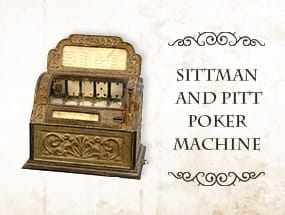 Early Poker Machine Design
Early Poker Machine DesignThe origin of the slot machine is hidden in the bustling bars of 19th century America, where the beer was flowing, and the stakes were always high – as long as people had something to bet on. The prototypical saloons you may remember from Old West movies had turned into more normal establishments. Different card games and (il)legal bets had always been popular, but people were always looking for new things to wager on.
In the 1880s, the first vending machines started to pop up along the East and West coast. At the time, they were more of a novelty. People were still fiddling with the designs, but bar patrons were taking really well to the chance of winning stuff from a machine. Some of the early vending machines, for instance, allowed you to bet on the outcome of a race between toy horses, with the proprietor paying off the winner with cigars. However, inventors wanted to eliminate the human factor from the equation – so, they started to experiment with hidden balance scales. You would put your coins in the machine, and if they fell on the right space, the scale would flip and you would win the award.
In 1891, the Sittman and Pitt Company introduced one of the first slots in New York – or at least a version that was close to it. The Sittman and Pitt slot was based on poker. It had a metal casing which held five rotating drums, each of them marked with 10 playing card faces. You had to hit a poker hand to win; however, since the 10 of spades and the jack of hearts did not appear on any of the reels, so the odds to hit a Royal Flush, the best paying combination, was reduced. And most importantly, the winnings were still paid out by hand from the owners of the establishment.
Fans of online casino games may have noticed that the Sittman and Pitt is much closer to video poker. Casino history might have gone down a very different route if their design had taken prominence – but it didn’t. While the first poker machines were gaining popularity on the East Coast, in the West another inventor was already working on revolutionising the world of gambling.
Charles Fey and the Liberty Bell
The Liberty Bell is a beloved US symbol – but it is also the name of the first ever slot machine. It was created by Charles Fey, who would go down in the history as the Father of Slots. The exact birth date of the first slot is unknown. Fey had been working on different designs in his San Francisco workshop during the 1880s; however, most slot fans consider 1894 as the year of the official debut of the first 3 reel slot in the world.
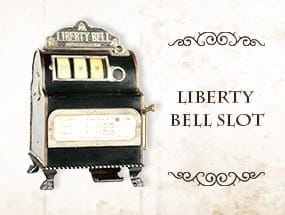 The Liberty Bell: This Is the First Slot
The Liberty Bell: This Is the First SlotThe Father of Slots, Charles Augustus Fey, worked as a mechanic in San Francisco and pursued inventive projects in his spare time. The Bavarian has been engrossed in the rising fad of gambling, and according to some sources he had working prototypes of a slot machine as far back as 1887, thus predating the Sittman and Pitt model. In 1894 and 1895, his machines would begin to spread among bars and saloons. They were such a hit, that the mechanic turned inventor would go on to quit his job and open a factory. This resulted in the Liberty Bell, which is officially recognised as the precursor of all modern-day slot games.
The Liberty Bell introduced the classic 3-reel slot design that remains immensely popular to this day. It featured only 5 symbols, and you had to align identical ones on a single payline in order to win. The simple design quickly endeared the Liberty Bell to the players, as it was much friendlier than the poker machines. The final version which would spread across the world probably appeared around 1898 and offered new features such as automatic payouts. As we already discussed, the first slot symbols included a diamond, heart, spade, star, and of course – the eponymous Liberty Bell.
The Liberty Bell symbol offered the highest payouts in the game, so it would ultimately give its name to Fey’s invention. The original Liberty Bell slot machines are very valued today, with less than 10 in existence.
How Did the Name of Slots Come to Be?
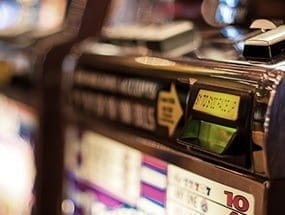 Slots weren’t always known as slots – nor as fruit machines. Once Fey’s designs started to spread, the traditional slot layout quickly earned the ‘one armed bandit’ moniker that is still quite popular nowadays. The ‘arm’ was, of course, the lever that you pulled to spin the reels, while the ‘bandit’ part can be attributed to the rather stingy nature of the first slots. After shaking hands with the bandit, one would usually get poorer. Of course, this didn’t stop slot fans from crowding the machines.
Slots weren’t always known as slots – nor as fruit machines. Once Fey’s designs started to spread, the traditional slot layout quickly earned the ‘one armed bandit’ moniker that is still quite popular nowadays. The ‘arm’ was, of course, the lever that you pulled to spin the reels, while the ‘bandit’ part can be attributed to the rather stingy nature of the first slots. After shaking hands with the bandit, one would usually get poorer. Of course, this didn’t stop slot fans from crowding the machines.
The name slot started to appear once the first fully automated models were produced. Before the end of the 1890s, most of the early slot machines required the assistance of the proprietor. He would confirm when you have hit a winning combination and hand you the prize. Once Charles Fey introduced automatic machines though, people quickly started to call them ‘nickel in the slot’. Indeed, the first slot machines required a single nickel to spin, and the ‘jackpot’ was often something like 50 cents – which wasn’t too bad for the time.
Of course, nickel-in-the-slot was a bit too lengthy, so people started using the much simpler slot – and the short and catchy name has held to this very day.
In the UK, slots are known as fruit machines, but this happened a little later. During the 1910s and 1920s gambling was subject to strict restrictions. Since people did not want to give up on slot machines, most establishments started to offer fruit-flavoured gum as a reward, and the manufacturers began to put the corresponding symbols on the reels. In reality, fruit machines are a specific type of slots – however, the name has gotten so popular in the UK, that it is recognised as an official synonym. Of course, this means that you would often see fruit machines without a single cherry on the reels.
The First Slot Machine Manufacturers
As slots gained popularity, they quickly began to spread around the world. The early models would vary in size but would usually be much smaller than the modern Vegas slots you are used to. There were many different designs and variations; naturally, nowadays there is a viral market for most of the classic slot machine models. As we already mentioned, the original Liberty Bell design by Charles Fey is exceedingly rare, but there are several other retro brands that are highly sought after.
As Fey would join the Mills Novelty Company, they would go down in history as the first producers of classic slot machines. However, other entrepreneurs such as Thomas Watling and, later on, Ode Jennings were quick to copy and improve the early Fey designs, and as slot popularity started to grow around the world, Aristocrat would mark the new wave of manufacturers competing for a global market.
Mill’s Slot Machine History
The Mills Novelty Company Inc. is one of the names closest linked to the early days of slot manufacturing. Established by Canadian-born Mortimer Mills, it produced various slots, vending machines and jukeboxes. Charles Fey, the Father of Slots, joined the company soon after introducing his Liberty Bell to the world, which meant that Mills Novelty were among the first companies to gain access to the classic 3 reel design.
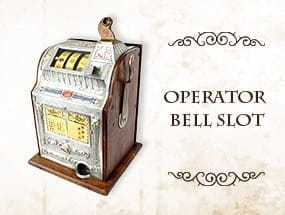 Classic Slot Design in the 1900s
Classic Slot Design in the 1900sThe Mills Owl was the first upright slot machine produced by the company – it got so popular, that the Mills Novelty trademark logo became an owl. Soon after, the company went on to produce the Mills Liberty Bell. For a very long time, this would be the main slot machine model in the US. Mills Novelty Co. released no less than 671 such machines, and they are considered very valuable.
In 1907, Charles Fey began work on an improved slot design that would become known as the Operator Bell. It was one of the first models that introduced fruit symbols on the reels. As we already mentioned, this would lead to the popular fruit machine nickname. There were also numerous technical improvements, like a better fitting neck coin entry. With 30,000 such models produced, the Operator Bell slot marked the rising popularity of slot machines.
Around the 1930s, the partnership between Mills Novelty and Charles Fey reached its peak with the Silent Bell. As the name suggests, the Silent Bell was much quieter than previous models – a distinct improvement, since early slots made quite the racket.
However, the most important feature for slot fans was the rising jackpot – this machine allowed you to win about twice as many coins. This was a sign for the future since the history of slots has always been marked by efforts to raise the jackpot higher. However, the Mills Novelty company would slowly fade from the slot machine market. Its gambling machine division operated as a separate firm called Mills Bell-O-Matic Corp. after the 1940s, but it fell back behind the competition and finally ceased production around the 1980s.
Watling Slot Machine History – The Early Bird
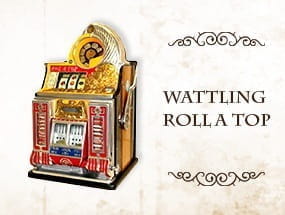 The Decorated Wattling Roll-A-Top Design
The Decorated Wattling Roll-A-Top DesignThomas Watling was among the first to sense the potential for growth in the gambling machine market and entered the business together with his brother John in 1889. This means that they were among the first slot manufacturers in the world. Their early designs generally mimicked the rest of the slot machines at the time, though they did earn some fame for their coin-operated Watling scales in 1902. The first coin-operated scales had appeared in 1884, around the same time as the first slot machines, and provided another form of entertainment.
Towards the 1930s, the Watling slot machines would start to diverge from the usual slot layout at the time. Their big breakthrough was the Rol-a-Top slot series. Their ornate designs stole the show and made the Watling slots a big hit for a while. These models are still highly sought-after by collectors to this day, as they represent the golden age of classic slots. However, lack of further innovation meant that the Rol-a-Top would be the last Watling slot machine hit. The company was a part of the slot industry for almost 70 years, but their last gambling machine came out in the 1960s.
Jenning’s Slot Machines – Technical Improvements
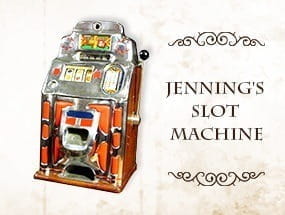 Early Jenning’s Slot Machine Desigh
Early Jenning’s Slot Machine DesighJenning’s slot machine designs are still hugely popular and sought after. Ode Jennings established his Industry Novelty Company (which would later become the Jennings & Company) in 1906, after he spent years working for the Mills Novelty Company. The company would initially specialise in repairing the existing Mills slot machines but would later start to produce its own models.
Ode Jennings was actually one of the inventors that greatly improved the overall technical functionalities of the early slot machines. His inventions allowed for a wider array of coins to be recognised by the machine and added an anti-jamming device – the old models used to get clogged if you insert your coins too fast. This would mark the beginning of the slot machine transition from a casual form of fun to classier entertainment.
The company remained one of the top producers of slot machines throughout the 60s, but even a merger with the Bell-o-matic (the former Mills slot division) couldn’t save the failing company in the 80s when it had to close doors.
Aristocrat Slots – The Pokie Branch
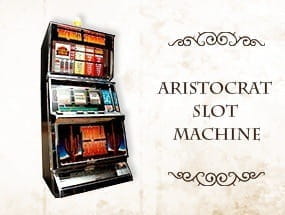 Aristocrat Slot Machine from Australia
Aristocrat Slot Machine from AustraliaMost of the early slot machine manufacturers were based in the USA, taking advantage of the gambling meccas that were growing there. However, slot popularity was slowly, but surely, rising in other corners of the world. In 1953, Len Ainsworth established the Aristocrat Leisure Ltd. in Australia, and the company would become a part of slot machine history.
The Aristocrat slot machines quickly took over the Aussie market, and soon started to appear in Europe too. Of course, you may have heard that in Australia slot games are known as pokies, but there is no significant difference in their overall design.
Aristocrat are one of the few early slot manufacturers that still exist in modern times. The company went through rough times when the founder, Len Ainsworth, was diagnosed with terminal cancer in 1994. Against his wishes, Aristocrat Leisure went public two years later, and with investors flooding in the profits skyrocketed. In a surprising turn of events, Len Ainsworth lived through his illness, but since he no longer had control over his beloved company, he would go on and establish a new one – Ainsworth Game Technology.
Nowadays, Ainsworth Game Technology is the biggest competitor of Aristocrat on the Australian market but falls behind globally. After acquiring a license to sell their slots in the USA, Aristocrat have become the second largest slot manufacturer in the world, falling behind only IGT.
The First Electromechanical Slot – Bally Gaming
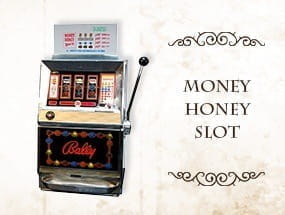 Money Honey: The First Electromechanical Slot
Money Honey: The First Electromechanical SlotThe first slot machines were purely mechanical contraptions, but in the 1960s, the shift in technology started to reach the gambling sector. In 1964, the first ever fully electromechanical slot appeared on the market. It was called Money Honey, and the reels were spun entirely electrically. Of course, it still had a lever – it would have been very unfamiliar for players at the time if they had to operate it by pushing a button.
The company behind the first electromechanical slot was Bally Manufacturing. The firm was established way back, in 1932, but initially specialised in pinball machines. However, the founders Bally and Maloney soon recognised the potential of slot machines and produced their first Bally Baby in 1936. It would be under the leadership of Bill O’Donnel, who took over after Ray Moloney passed away, that the Bally Manufacturing Company would revolutionise the market. They would focus on improving the technological designs of slot, the efforts culminating in the Money Honey, which is widely recognised as the first electromechanical slot in the world. While it still featured the familiar lever, it had several crucial improvements.
The Money Honey was not only electronically controlled, but also featured a ‘bottomless’ hopper – which meant that it could offer bigger payouts of up to 500 coins. The Money Honey became a huge hit, which paved the way for electromechanical slots to take over – and established Bally Manufacturing as one of the biggest slot machine producers on the international market. Their dominance would continue until the 80s, when problems would cause the firm to change its management.
The First True Video Slot
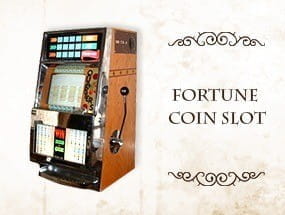 Fortune Coin: The First Video Slot
Fortune Coin: The First Video SlotThe transition to the modern, more familiar video slot format would come during the 1970s. The Las Vegas slot machine history has always been a rich one and most of the recent innovations can trace their roots to the bustling gambling mecca. The Las Vegas Hilton hotel featured the first video slot after it was manufactured by the Fortune Coin Company in 1976.
The Fortune Coin video slot had completely virtual reels which were displayed on a modified 19-inch Sony TV. The design was crude, but functional. The initial reaction by players was rather sceptical – they had difficulty using the new machine and did not trust the electronic layout. After all, until then slot players had been busy trying to map the reels and estimate the odds and payout rates on their own.
This meant that video slots would have a somewhat slow start – however, things would begin to change in 1978 when the Fortune Coin company was purchased by International Game Technology.
IGT should be a well-known name for most fans on online slots. The company would improve the initial video slot design by adding an additional number of paylines. The changes by IGT truly kickstarted video slots and had a significant influence on casino history. The company would go on to develop the first video poker machines and this electronic wave changed the casino landscape forever. Fast forward a few years, and we get to the modern-day online casino industry which offers numerous awesome online slot games to choose from.
The First Bonus Screen
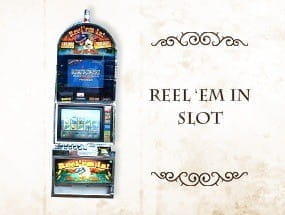 Reel ‘Em In – the First Bonus Slot
Reel ‘Em In – the First Bonus SlotIf there is something that we casino players love, it is bonus slots. However, the bonus round is a rather new invention – the first bonus screen appeared in 1996. It was featured in the Reel ‘Em In slot produced by WMS, one of the companies that rose to prominence during the 1970s.
The ‘multi-line, multi-coin secondary bonus’ quickly became a hit with players and marked another significant change in the direction of slot development. Naturally, the bonus was a feature which only a fully digitalised video slot could support.
The Reel ‘Em In marked the final step of the transition towards a new age of slot play. The tired old designs could finally be revamped with exciting new features that would keep slot players entertained. However, the significance of Reel ‘Em In would quickly fade into obscurity, and the innovative new game would be forgotten. The same year, 1996, marked another significant event in slot history – the official launch of the first online casino.
The Rise of Online Slots – Spinning Wherever You Want
When the first online casino opened its virtual doors in 1996, the gambling landscape would change forever. The first operator had only 18 games on offer. All the titles were powered by Microgaming, which was still considered a newcomer to the casino industry, but today, the company offers some of the best titles, some of them being a part of the free slots machines to play for fun. Few people could have guessed how the modest project would kick off while Microgaming was on its way to becoming one of the most established online slot suppliers worldwide.
The boom of online casinos marked a rapid shift in the fortunes of online slots. The games have reached unprecedented popularity, which means that there are newer and (in some cases) better titles coming out all the time. Most of the land-based classics have been fully optimised for online play and transferred to your PC, which was made easier by the fact that developers such as IGT simply switched their focus to online titles.
As you might have guessed from our homepage, most of our reviewers are online casino fans and prefer to play from the comfort of their homes. As with anything on the internet, the early days of online gambling marked the rising risk of online scams. Nowadays, all operators are subject to much stricter regulations, but it is still important to play safely. Modern online slots are no different from the land-based machines you will see at any other casino venue, as long as they have passed all the necessary checks.
Transferring the Land-Based Classics
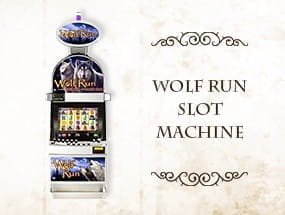
Many of the modern online slots are actually based on real slot machines that you can find in Las Vegas and other casino havens. The major task before most software providers is to bring the genuine casino experience directly to the player. Popular online titles such as Wolf Run and Cleopatra can be played with real coins in major casino venues around the world.
IGT are among the main providers responsible for that. The history of IGT slot machines is a rich one – they have ranked among the biggest land-based casino suppliers for three or four decades, ever since the video slot craze kicked off. When the first online casino began to appear in the 1990s, they were quick to grasp the opportunity and turned their attention towards turning their slot machine designs into internet games.
The transition from land-based to online slot machines actually isn’t as hard as you might think – most of the modern slot machines are powered by complex RNG processors that are very similar to the software behind their online counterparts. Since video slots are digital, bringing them to your computer or mobile screen isn’t as hard as you would think.
The Future of Online Slot Games

The online market has opened countless possibilities for the slot industry. Ever since the first video slots began to break free from the constraints of their mechanical counterparts, designers have been faced with a plethora of options to make their titles nicer for us. This means that even though the history of online slots has been a rather short one, it has also been quite eventful from a player’s point of view.
As of now, most slot titles are experimenting mostly with their bonus rounds, adding more expansive graphics and even new gameplay elements. Titles such as Playtech’s Planet of the Apes can put in a larger number of reels and special effects that would be harder to implement in land-based slots. There are also games like Gonzo’s Quest and Finn and the Swirly Spin which are totally breaking the very basics as slot play – there aren’t even any reels there!
Virtual slots are the future – people have been shifting from their PC to their mobile phones and might make the transition to Virtual Reality at some point in the near future. Slot developers are trying to keep in touch with those trends, so we might get to see even more experimental slot layouts sooner rather than later.
How Much Was the Largest Slot Jackpot in History?
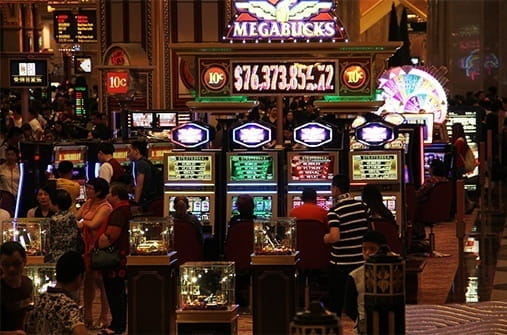
The history of slot machines has always shown a clear struggle to up the maximum wins – which has often been limited by purely mechanical constraints. To make us dream big, manufacturers had to negotiate both with the size of the hopper and with the odds of hitting a winning combination. With the advancement of electronics though, slot wins got bigger and bigger – until we reached the time when the first progressive jackpots were introduced.
Progressive jackpots are the biggest wins any slot fan can dream of. They require a network of linked slot machines, with a portion of each wager going to the growing jackpot. With land-based casinos, such jackpots are usually restricted to a certain region, much like a lottery.
As you might have guessed, the biggest wins have always been centred in the USA, in the state of Nevada where the glittering towers of Las Vegas await the next lucky winner. The largest slot jackpot in history was claimed in the Excalibur casino on the 21st of March, 2003. It was worth a total of $39,719,826 – quite an impressive number for a $100 bet! The jackpot was part of the famous Megabucks progressive network and was hit by an unknown software engineer. To this date, it still holds the title for a biggest slot win in history.
What About the Online Jackpots?
The online casino platforms have greatly expanded the progressive jackpot slot networks and made them accessible all over the world. Even though online slots still can’t rival the Las Vegas progressive networks, they come closely after them in terms of jackpot potential. Two online jackpots have entered the top 10 biggest slot wins hall of fame, and the average level of the jackpots has been growing steadily throughout the years.
The Guinness World Record for the biggest online slot win in history is currently held by the classic Mega Moolah game. It was claimed on 6 October 2015 by retired UK soldier Jon Heywood, and worth £13,209,300. The record still holds, even though several online jackpots won on mobile have come close to breaking this threshold. Mega Fortune, in particular, has struck rather close.
Slot History Continues Even Now
The endless horizons opened up by the advent of the internet mean that slots will continue to change. With the boom in the gambling industry, innovation to the tested designs have been much more frequent than in the preceding decades. Slots are surely the most straightforward games you will find at all the best slot sites, and their complexity has been rising steadily.
Slot fans have been rather enthusiastic about mastering online games since they have much greater exposure than their land-based equivalent. If you want to know more about the present of slots, then browse the articles below and see for yourself all the useful info we have gathered.